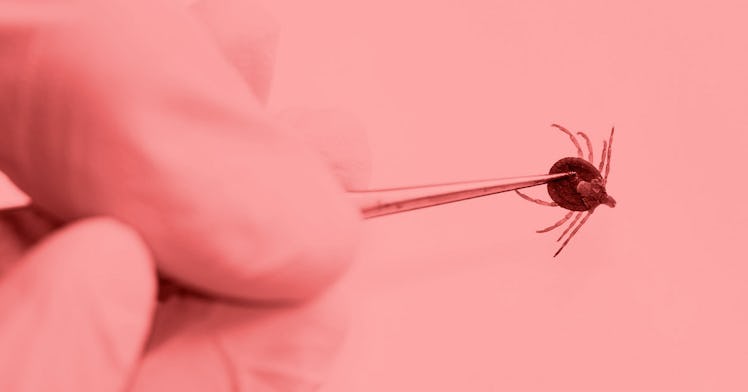Fever, Muscle Aches, Chills? It Might Be an Emerging Tick-Borne Disease
This little-known sibling to Lyme's is growing in regularity. Here's what you need to know.

An emerging tick-borne illness called anaplasmosis is on the rise in the U.S., and you probably won’t be able to identify it from a rash like with Lyme disease. So if your kid suddenly comes down with a fever or headache this summer, anaplasmosis might be the culprit — especially if they’ve been tromping around in the woods, or if you’ve let the grass in the yard get out of hand.
Anaplasmosis generally isn’t as dangerous as Lyme, but it’s not to be taken lightly. It’s caused by the bacterium Anaplasma phagocytophilum, which is transmitted to humans by the bite of two different types of ticks: the black-legged tick in the Northeast and Midwest and the western black-legged tick along the West Coast, both of which can also transmit Lyme disease.
Anaplasmosis is seasonal, mostly showing up during the summer months with a large peak in June and July and a smaller peak in October and November, coinciding with the life cycles of the ticks.
The disease used to be very rare, but there has been an uptick in cases in recent years. In 2000, there were 348 cases reported in the U.S. That number has steadily climbed, reaching a peak of 5,762 new cases in 2017, according to the Centers for Disease Control and Prevention. There were about 4,000 new cases in 2018, the last year the CDC has reported data for.
Almost everyone who gets anaplasmosis comes down with a fever. Severe headaches, chills, muscle aches, and gastrointestinal symptoms, such as nausea and vomiting, are also common. A rash appears in less than 10 percent of cases.
It’s important to catch the disease early to stop it from becoming severe. So if you or your kid develop any of the symptoms after finding a tick bite or spending time in the woods, go see a doctor.
Luckily, less than one percent of cases end in death. Severe disease is also very rare, but anaplasmosis can cause bleeding problems, respiratory failure, and organ failure if not treated promptly. Older people and those with a weakened immune system are at higher risk.
Treatment is easy: a course of the antibiotic doxycycline. Diagnosis, however, isn’t as straightforward. Medical providers usually make the call with symptoms and history of exposure alone, but they may also run blood tests to confirm the diagnosis, which can take several weeks to return results, according to the CDC. If they think your child has anaplasmosis or another tick-borne disease, they will probably prescribe antibiotics while waiting for the results.
The best treatment is prevention. When spending time outdoors, especially in the woods, the Onondaga County Health Department in New York recommends wearing shoes, light-colored socks, long pants tucked into boots or socks, and a long-sleeved shirt tucked into pants. Consider using an insect repellent and treating clothing and gear with products that contain 0.5 percent permethrin, a type of insecticide.
Don’t forget to check your body and your child for ticks after spending time outdoors. Mow your lawn often to keep ticks out of your yard, and keep backyard playgrounds, decks, and patios away from wooded areas.
“If we are diligent in practicing the same prevention measures we’ve learned to prevent Lyme disease, we are protecting ourselves from other tickborne diseases including anaplasmosis,” Indu Gupta, health commissioner of Onondaga County, said in a statement.
If you do find a tick on yourself, remove it early to reduce the chances of infection. Use tweezers to firmly pick up the tick, grabbing it where it enters the skin and pulling it away from the body. Clean the bite with soap and water, rubbing alcohol, or hydrogen peroxide, and record when and where on your body you were bitten.